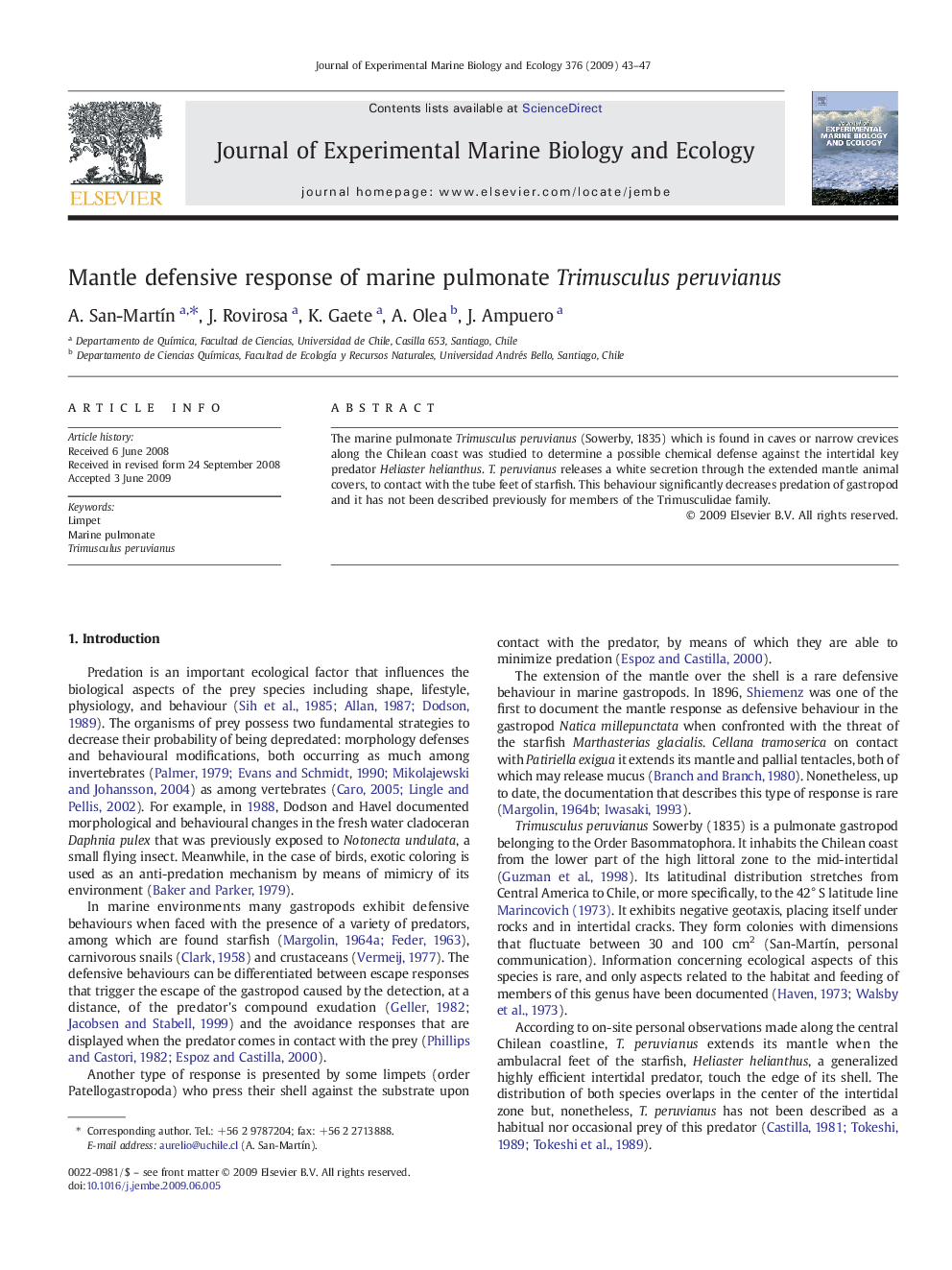| Article ID | Journal | Published Year | Pages | File Type |
|---|---|---|---|---|
| 4396957 | Journal of Experimental Marine Biology and Ecology | 2009 | 5 Pages |
Abstract
The marine pulmonate Trimusculus peruvianus (Sowerby, 1835) which is found in caves or narrow crevices along the Chilean coast was studied to determine a possible chemical defense against the intertidal key predator Heliaster helianthus. T. peruvianus releases a white secretion through the extended mantle animal covers, to contact with the tube feet of starfish. This behaviour significantly decreases predation of gastropod and it has not been described previously for members of the Trimusculidae family.
Keywords
Related Topics
Life Sciences
Agricultural and Biological Sciences
Aquatic Science
Authors
A. San-MartÃn, J. Rovirosa, K. Gaete, A. Olea, J. Ampuero,
